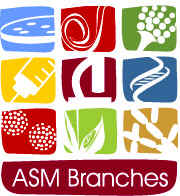

 |
 |
Abstracts will be posted in the order they are received. The Use of Signature Tagged Mutagenesis in a Burkholderia cepacia Pulmonary Infection Animal Model HUNT,
TRACEY A. * , CORA KOOI, PAMELA A. SOKOL,
and MIGUEL A. VALVANO
Burkholderia cepacia infections cause elevated morbidity and mortality among cystic fibrosis (CF) patients. The seriousness of these lung infections is complicated by the ability of B. cepacia to spread by patient-to-patient transmission, as well as the multiple antimicrobial agents to which B. cepacia is resistant. As a result, B. cepacia is rarely eradicated once a CF patient has been colonized. Although many virulence factors have been postulated to play a role in infections caused by B. cepacia, the mechanisms by which this pathogen causes disease remain largely unknown. We hypothesize that B. cepacia possesses unique virulence factors which allow it to persist and survive within the host. Some bacterial genes may be preferentially expressed following interactions with the host and, consequently, potential virulence factors that are studied using in vitro approaches may not be relevant in vivo. We have adapted the negative selection strategy of signature tagged mutagenesis (STM) to identify bacterial genes that are expressed in vivo using the rat agar bead model for B. cepacia pulmonary infections. A PCR-based STM system developed by Lehoux et al. (1999) improves upon the traditional hybridization procedure and allows for a more rapid and method of screening. STM uses a pool of genetically engineered transposon mutants, each containing a unique oligonucleotide tag incorporated onto the chromosome. We have adapted the PCR-based technique to construct a pool of unique plasposons for use in B. cepacia containing 41 unique tags. Using real-time PCR, strains harbouring mutations in genes essential in vivo will not be detected following infection in the rat model and can, therefore, be putatively identified as genes required for survival. This modified method of STM has allowed us to identify genes important for virulence of B. cepacia in a rat model of pulmonary infection. The PCR-based STM approach can reveal putative virulence determinants of B. cepacia which are important for in vivo infections and may potentially serve as targets for drug therapy. (Abstract received Sep 30) This poster was presented previously
at the American Society for Microbiology 102nd General Meeting, Salt Lake
City, Utah, May 2002. If
you have questions about conference posters, e-mail
Mary Ann Cardani |
||
Questions or suggestions concerning website, contact [email protected] |
||
Last updated:
August 15, 2017
|